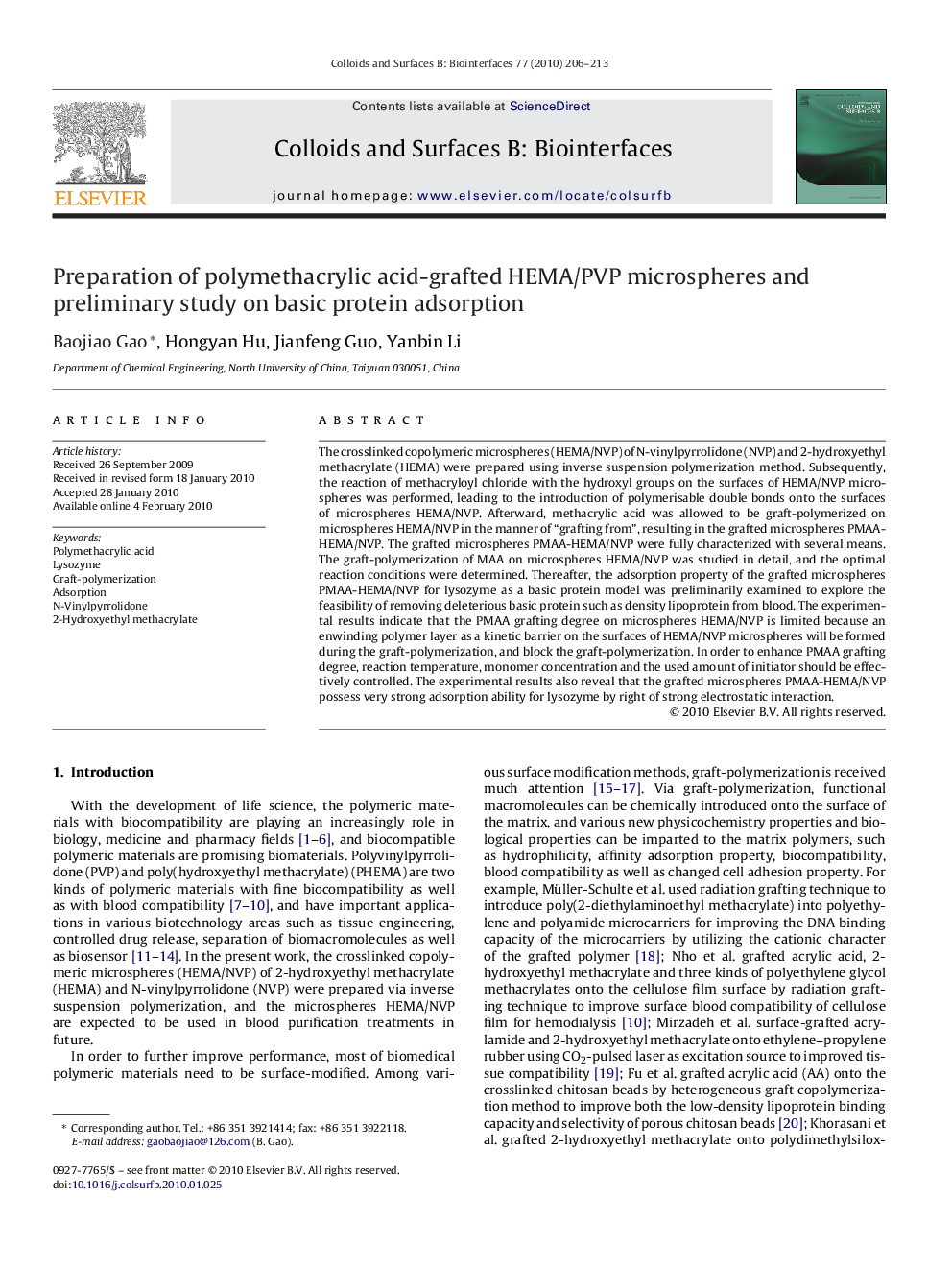| Article ID | Journal | Published Year | Pages | File Type |
|---|---|---|---|---|
| 601497 | Colloids and Surfaces B: Biointerfaces | 2010 | 8 Pages |
The crosslinked copolymeric microspheres (HEMA/NVP) of N-vinylpyrrolidone (NVP) and 2-hydroxyethyl methacrylate (HEMA) were prepared using inverse suspension polymerization method. Subsequently, the reaction of methacryloyl chloride with the hydroxyl groups on the surfaces of HEMA/NVP microspheres was performed, leading to the introduction of polymerisable double bonds onto the surfaces of microspheres HEMA/NVP. Afterward, methacrylic acid was allowed to be graft-polymerized on microspheres HEMA/NVP in the manner of “grafting from”, resulting in the grafted microspheres PMAA-HEMA/NVP. The grafted microspheres PMAA-HEMA/NVP were fully characterized with several means. The graft-polymerization of MAA on microspheres HEMA/NVP was studied in detail, and the optimal reaction conditions were determined. Thereafter, the adsorption property of the grafted microspheres PMAA-HEMA/NVP for lysozyme as a basic protein model was preliminarily examined to explore the feasibility of removing deleterious basic protein such as density lipoprotein from blood. The experimental results indicate that the PMAA grafting degree on microspheres HEMA/NVP is limited because an enwinding polymer layer as a kinetic barrier on the surfaces of HEMA/NVP microspheres will be formed during the graft-polymerization, and block the graft-polymerization. In order to enhance PMAA grafting degree, reaction temperature, monomer concentration and the used amount of initiator should be effectively controlled. The experimental results also reveal that the grafted microspheres PMAA-HEMA/NVP possess very strong adsorption ability for lysozyme by right of strong electrostatic interaction.
